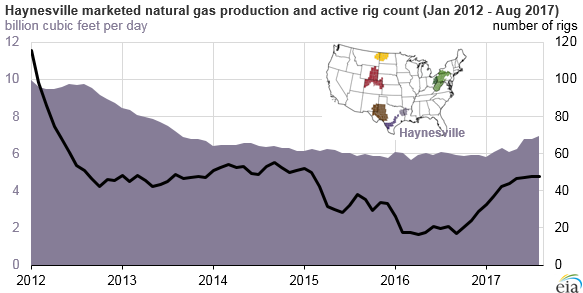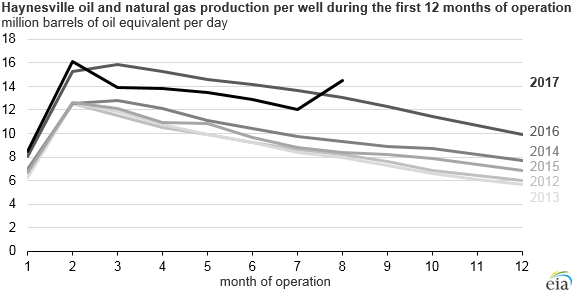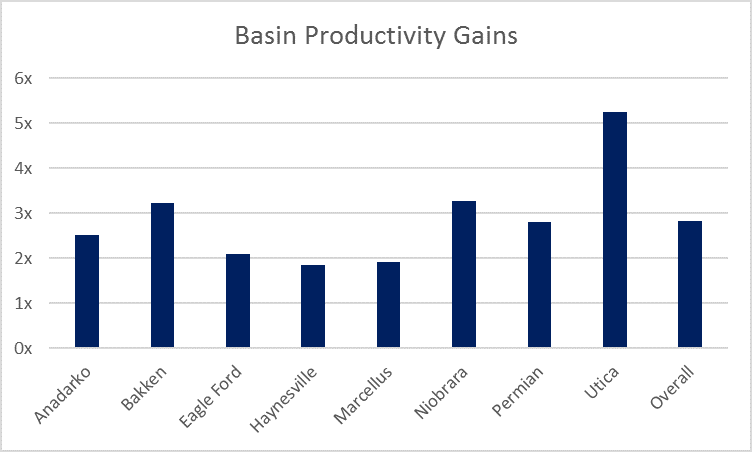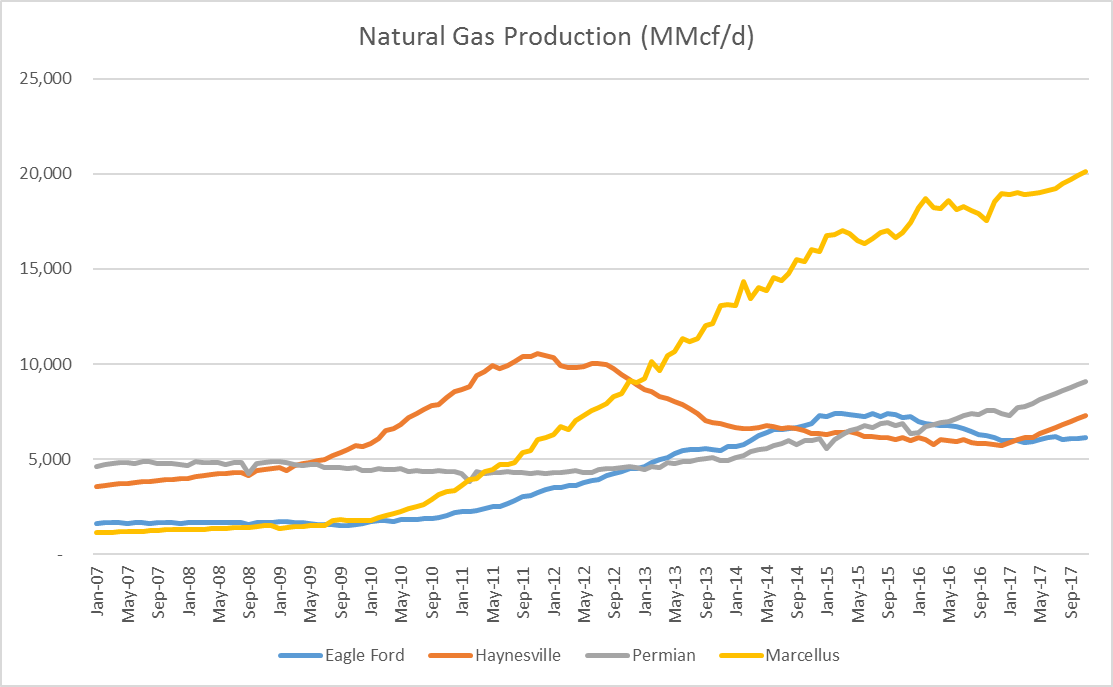Rig count tripled, gas production up almost 1 Bcf/d
While the Marcellus receives most attention in U.S. natural gas, the Haynesville has been staging a quiet resurgence.
Drilling activity in the Haynesville bottomed out in September 2016, at a mere 13 rigs. Since then, activity has more than tripled, with 46 rigs operating in the basin in September 2017. While this falls far short of the 160 rigs that were operating in the basin in the beginning of 2011, it is the highest rig count in the Haynesville since 2016.
The rise in drilling activity has now translated into production growth, and according to the EIA the Haynesville is producing 6.9 Bcf/d. This growth bucks the trend, as the Haynesville had been producing about 6 Bcf/d for the past three years.
Production growth without a drilling rig
Some of this production growth has also come without the use of drilling rigs. In its earnings call yesterday, QEP reported that it had implemented an extensive refrac program on its Haynesville acreage, boosting production by 60% without drilling new wells.
The United States Geological Survey estimates that the Haynesville play is the second largest shale gas play in the U.S., with 174.6 Tcf technically recoverable.
Well results in the Haynesville have been improved significantly in past two years, according to the EIA. Longer laterals, additional fracture stages and higher proppant volumes have each contributed to the improvement in well results.
However, based on EnerCom’s Effective Rig Count, activity in the Haynesville has not seen as much improvement as those in most other basins.
In the Haynesville, modern rigs are yielding 1.84 times more production than rigs in the beginning of 2014 did. While this is a significant jump, rigs in places like the Niobrara and Bakken are now outputting more than three times as much production as in the beginning of 2014.
Haynesville is now third-largest shale gas basin
The Haynesville was once the most important shale gas basin in the U.S., and had the highest production from 2009 to 2012. However, the meteoric rise of the Marcellus has now eclipsed any competitor, and is producing over 20 Bcf/d. The Permian has also grown in natural gas production, and the world’s most popular shale basin now produces the second-most natural gas. The Haynesville now ranks third among shale basins, with an estimated 7.3 Bcf/d in November.






